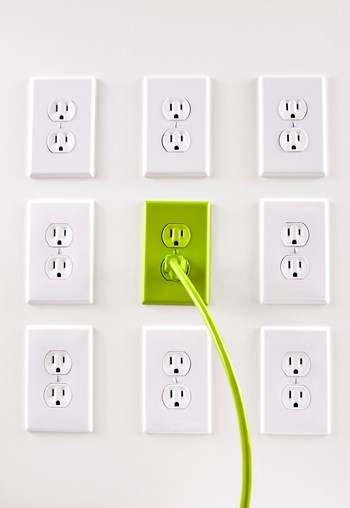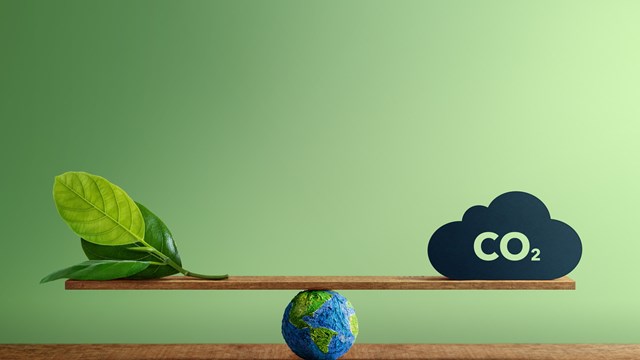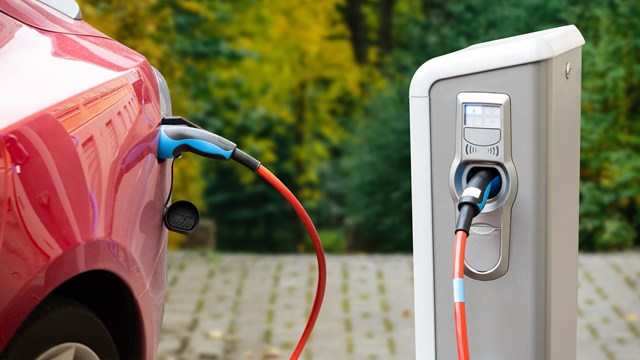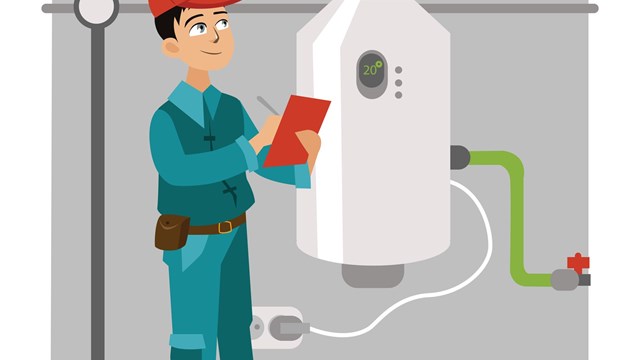
In our highly disposable society, how people and communities deal with their trash is of vital importance to both individuals and their communities as a whole. The tri-state area produces a staggering amount of garbage every day, and recycling is one method of lessening the environmental impact of that garbage, as well as lowering costs and improving public health and sanitation. Many co-op and condo boards outline their recycling plans within the governing documents, though to get residents to actively recycle, more proactive steps often need to be taken.
Processing a Nation's Trash
New Jersey has had voluntary recycling programs since 1971. "But," says Marie Kruzan, executive director of the Association of New Jersey Recyclers, a private, nonprofit organization in Bridgewater, "The way the state law is written it's a mandatory sort-and-separation law, with three mandated materials." Those three primary materials vary between counties and individual communities, and are determined by each area's specific need and the nature of their garbage output.
According to Guy Watson, bureau chief of recycling and planning for the New Jersey Department of Environmental Protection (DEP) in Trenton, "Individual counties choose which materials will get recycled. Most have chosen the same basic materials, which are newspapers and a certain amount of junk mail, as well as bottles and cans and some plastics in the residential sector." Watson adds that in the commercial sector, a big recyclable is office paper.
Whether commercial or residential, one type of waste mandated for recycling statewide since 1987 is leaves and yard waste. It's against the law to bring leaves or yard waste to a landfill, and each county's recycling plan has to let residents of each town know where their municipality collects organic materials for composting.
Watson says that New Jersey's recycling protocols "date back to former governor Burns' administration in the late 1970s. He convened a task force—the New Jersey Recycling Forum—and they were charged with issuing a report on the recycling policy." Their report, which was called Recycling in the 1980s, came out in late 1979, and recommended that the state adopt a 25 percent voluntary recycling goal as state policy.
The first specific recycling law in the state was in 1982, and that was the Clean Communities and Recycling Act, which was a voluntary program. According to Watson, the mandatory Recycling Act was adopted in 1987, and it made the former 25 percent goal mandatory. The Act was amended again in1993, and the goal was upped to 50 percent of the municipal solid-waste stream, and 60 percent of the total solid waste stream for recycling.
New Jersey's infrastructure for processing trash and handling recycling varies according to district. Municipalities that pay for their own garbage collection using their own employees or by contract with a private employer compose a third of the state.
"There are 22 designated solid-waste districts, and they each manage it differently," Kruzan says. For example, Bergen County has seventy towns, each of which has its own method of handling waste, and is different from Burlington County, which runs a single countywide program. "There's no 'This is the way it is' in New Jersey," Kruzan says. "There are 22 different ways of doing it. You have towns that have contracts with private haulers to pick up the waste, and people with franchises with the towns to collect from those municipalities."
Where Does it All Go?
Garbage disposal is the biggest expense for anybody in New Jersey regarding sanitation, Kruzan says, though that is not necessarily the largest expense in the state of New Jersey. The collection and disposal of garbage, "averages between $60 and $80 a ton," she says.
The state operates seven landfills and three incinerators, and much of the waste goes to in- and out-of-state landfills. Different types, or classes, of waste must be handled and processed differently depending on what kind of waste the garbage is. "Class 13 goes one way, bulky waste goes another, and hazardous waste goes yet another," Kruzan says.
Although New Jersey's garbage treatment facilities operate in industrial zones, each can create its own type of disturbance. "In composting facilities there are smells, and in Class B facilities, which are for bulky waste, there are frequently noise and truck issues, but those are all regulated by permit," Kruzan says. "The Class A facility is just an intermediate processing facility," she points out. The materials picked up from the curb go to a facility where they are dumped on a floor, put through a series of mechanical devices and separated into component parts, after which they are packaged for delivery to a mill.
"[Class A] are the least regulated of the four facilities," Kruzan says. However, she points out, "All facilities are governed by the same rules everybody else has to go through to get a permit to operate. You have to go through the town and live within the rules."
Infrastructure and Cost
What special infrastructure is necessary to handle New Jersey's garbage? "Ever since there has been recycling of paper, the New York Metropolitan area—New Jersey included—has become the largest producer of separated paper for recycling in the world," says Watson. "There has long been an infrastructure for recycling certain materials; there are at least 60 commercial paper brokers, and for steel and scrap we have two steel mills in the state, both of which use 100 percent recycled material, so there's been a long-standing history in the industry with that."
"What has grown because of the Recycling Act has been compost facilities," Watson continues, "of which there are now 200 in the state. About 100 facilities have also grown up to deal with separated materials from construction and demolition activities. And in the last four or five years, an industry has sprung up to handle consumer electronics."
What is the cost of recycling to taxpayers in New Jersey? "In the towns that collect their own garbage, the cost is within the property tax structure," explains Watson. "You've got towns that contract for collection, which is also in the property taxes, but then you have towns that require their citizens to contract with private garbage haulers. Some towns collect both garbage and recyclables, while others just contract for the recyclables. Some counties provide countywide recycling programs for the residential level to every town that wants one.
In general, however, Watson says that it costs less to recycle than to dispose of materials. Typically the collection costs involved in recycling are a bit higher on a per-ton basis, because you're collecting the more large-volume, low-weight materials. With solid waste on the other hand, you have a disposal fee when you go to a landfill or an incinerator. You don't have that cost with recyclables. On average it costs less to recycle than to dispose of materials."
What are the benefits, beyond the financial, of recycling trash? "There's a lot of environmental benefits," says Kruzan. "The EPA developed a program that allows you to plug in information regarding tonnages of materials recycled and it will tell you how much greenhouse gas emissions savings, how much raw materials savings that tonnage represents."
Based on 2003 data, the environmental savings are huge, says Watson—at least three million tons of iron, coal and limestone in the production of new metals were recycled in New Jersey in 2003, over nine million tress were saved. In terms of energy conservation, the sum total of the 10 million tons of materials that were recycled in the state in 2003 saved over 86 trillion BTUs. Recycling is the third-largest source of greenhouse gas emissions savings.
A Window on Tomorrow
Even with recycling and treatment plants set up across the state, the amount of waste generated by New Jerseyans continues to rise. Statewide recycling programs will have to change to keep up with the volume of trash.
"One of the things that we've identified as a concern is that despite our recycling efforts, garbage generation continues to grow," says Watson. "That's because our lifestyles have changed. Consumer products are using more and more packaging, and people are eating more and more meals outside the home. If our projected trends of about 4.5 to five percent annual increases in solid waste generation continue into the future, one can predict that our waste stream, which in 2003 was 20 million tons, could grow to about 33 million tons by 2015."
Also, Watson says that the infrastructure is going to have to grow in order to manage such an increase. "That's one of the reasons the commissioner has proposed a new solid waste management plan," Watson continues, "because in order to meet our mandate we have to recycle at least another 1.7 million tons of material. The government does not recycle—it establishes the policies, but it is the private sector that does the recycling."
As time goes on, Kruzan adds, "We hope that there will be increased recycling. That's the intention of the state plan, too." That plan deals with the fact that the state is aware of the growing trash problem and wishes to increase recycling. "They have very specific goals and material targets—paper, cardboard, mixed paper, food waste, compost and things like that," Kruzan says.
The state plan also addresses source reduction, which acknowledges the fact that generating less waste has been a difficult thing for anyone in the country to handle.
'Right now the issue is that recycling numbers have gone down and waste has gone up—so the gap is getting greater," Kruzan says. According to recent data from the New Jersey DEP, the statewide municipal solid waste stream recycling rate is 32 percent, down from a high of 45 percent in 1995. The proposed solid waste management plan focuses on boosting municipal solid waste recycling rates across New Jersey to a minimum of 50 percent through stepped-up enforcement and educational outreach. "The first thing you have to do is reinstate the recycling so you get back up to where you were before—and then you start working on getting more out of that material," Kruzan says.
What Boards Can Do
Pam Lewis, recycling coordinator for the Somerset County Office of Recycling in Somerville says that although boards include recycling laws and information in the lease, many residents either aren't familiar with them or fail to comply.
"You can't just expect that people are going to read in their lease what the recycling laws are," Lewis says. "It's good to come up with a plan so that everyone knows."
One solution, she continues, is for boards to include such information in their monthly newsletters. Lewis cites an example of a building her office was working with recently that was having major issues with their recycling dumpsters. "They were getting a lot of trash mixed in with the recyclables - people just dumping in whatever they felt like, including bulky waste items, carpeting, leaves, and old furniture," she says. "One of the things they did was to put an article in their HOA newsletter about what you are and are not supposed to recycle and to remind people that it is legally required."
In addition to using the monthly newsletter, to raise awareness, Lewis says boards can also create posters and flyers and give new residents packets that explain the recycling procedures, because, as she points out, each place is different. "Some places have curbside buckets for each resident, others have sheds with dumpsters - and we have a new complex that's going to have a recycling chute," she says. "You have to look at your system and make sure your residents and owners are all aware of it and don't take it for granted."
Backyard composting, which the Office of Recycling is promoting locally, is another innovative recycling method that Lewis says "Can take a lot of food and bulk waste out of people's garbage. I save almost 20 pounds a month of food waste in my own backyard composter."
She says she also has a pilot project going with families in a Bridgewater school. The participants, who bought composters, are tracking their food waste to see how much waste out of twelve families they can divert from the landfill in one year. "We're going to meet this month and see what we've done since April," Lewis says. Composting, she continues, is something an innovative co-op or condo could realistically use. "If they set up little pods of composting centers throughout their grounds they can not only save on the garbage but also have a wonderful fertilizer to put back for their plants and grounds."
"Cut it and leave it" is another program the Office of Recycling promotes for co-ops and condos. "We're advertising, and we have workshops where we remind all the residents, including the associations, that they should cut and leave their grass and not bag it." She says associations that have outside firms cut their grass should investigate the possibility of leaving the clippings on the lawn to increase nitrogen, thus getting more organics to their soil. Leaving cuttings as-is also saves the HOA money on water bills and fertilizer, rather than having their landscaper throwing the clippings into a landfill.
FreeCycle, a new procedure offered by the Office of Recycling, is another reuse method available to co-op and condo residents. Lewis says a resident can post any item that they want to get rid of, not sell, for free on the FreeCycle page of the Office's website. It then goes out to all the county residents, who constantly swap things they don't need. "It's a materials and waste exchange," Lewis says. "Associations can promote to their members to reuse. Before they throw something out, ask, what else can they use it for?"
"We believe that that will continue," says Watson, "and our role will be to make sure that there's an orderly growth, that it's done in an environmentally sound manner." By becoming aware of the waste we generate and how to reduce that amount, your community can do its part to make not only its property but also New Jersey a much cleaner place in which to live.
Michael McDonough is a freelance writer living on Long Island.






2 Comments
Leave a Comment